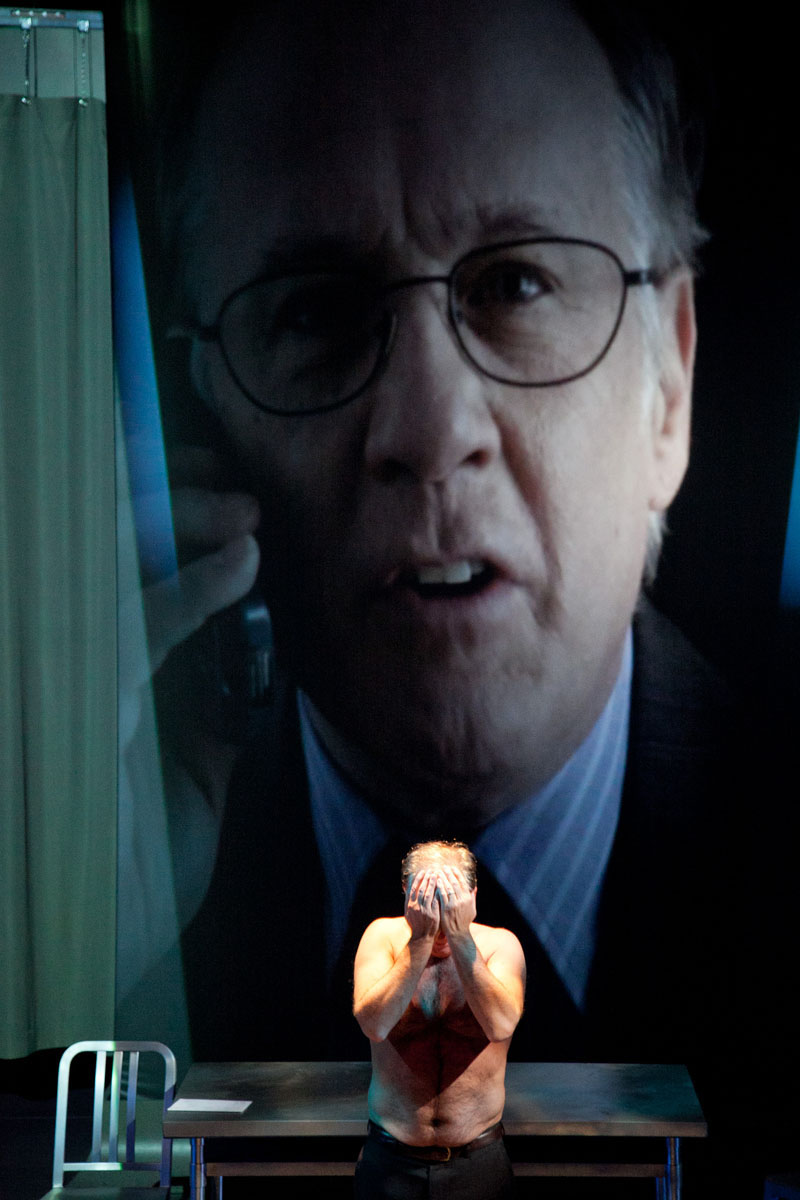You are a good person. You guide your life by moral principles; you eat green, do your recycling and even refuse to own a car and a cellphone. Oh, and you’re an atheist. Then, out of nowhere, comes a female God who decides to put your convictions to the test by hitting you with all kinds of adversities.
Such is the plot of The Book of Bob, a present-day adaptation of the Hebrew Bible’s Book of Job. The poor soul put to trial is Montrealer, Bob — a middle-aged McGill professor who teaches Dostoevsky’s writings on morality and faith.
Suddenly, Bob’s stable life is bombarded in all directions by the caprices of a female deity. A student files a formal complaint against him for mistreating her in front of the entire class; his wife is diagnosed with colon cancer; his son is selling weed and his father commits suicide.
The play explores how Bob’s righteous self-image is ultimately challenged, and leaves it to the spectators to decide for themselves the authority of faith in one’s life.
Distinguished Montreal-raised actor, Ron Lea, plays the role of Bob. His talent overflows the stage with wit, perception and confidence. He is definitely convincing in his portrayal of Bob and his charismatic performance makes it easier for the public to sympathize and even identify with him.
Constantly interacting with Bob, in the skin of ten different characters, is the bold actress, Lucinda Davis, who was awarded the 2013 META Award for Outstanding Female Actor. Playing the female lead, Davis was already God in the playwright’s mind even as the play was still taking form, according to an interview with Suzanne Shugar. When you see her on stage, this choice becomes obvious — Davis is incredibly versatile in the way she creates unique traits and voices for each character, while avoiding venturing into the realm of parody.
Moreover, one of the main features of the play are the elaborate, huge screens that envelop the entirety of the stage. Brought forth by cinematographer Benoît Beaulieu and videographers George Allister and Patrick Andrew Boivin, this visual component is highly interactive, always showing where the main character is (home, campus, etc) and with whom he is interacting. It is a skillful way to avoid dry narration and creates an imaginative ambience.
The Book of Bob is the latest play written by Montreal’s Arthur Holden, and the Centaur Theatre is currently holding its debut run. Holden is captivated by biblical texts and attempted to explore the subject in this new play. “I’m not looking to change minds. I’ll be satisfied if I touch one or two hearts,” Holden said in the same interview with Shugar.
In this regard, he has been undoubtedly successful; you won’t leave the theatre without philosophizing and making considerations about your own life.
The Book of Bob runs until March 2 at the Centaur Theatre. For more information visit centaurtheatre.com/thebookofbob.php
Photo by LuceTG.com
